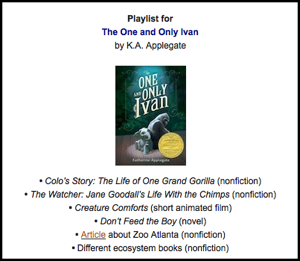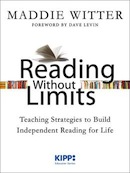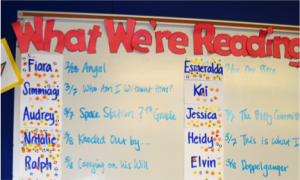Six Ways to Get Kids to Read More
By Maddie Witter
The more kids read, the better they will become as readers. Yet with all the changes that happen in adolescence, some students may hit a middle grades malaise leading to an academic slump. Such malaise can certainly influence the desire to read.
Here are six kid-friendly strategies that can boost reading engagement for all of your students. Also included are specific strategies you can use with nonfiction texts. Many of these ideas are drawn from my book Reading Without Limits.
1. Bookcase Update
Create a bulletin board that displays what kids are currently reading and update weekly (as shown at the right). Reach out to other teachers, your principal, and families to also share what they are reading. Bookcase Updates are a great way to increase reading stamina in your classroom, and the visual is one method to hold students accountable to their reading. Seeing what peers are reading will also motivate kids to read more. Track the number of books read using a color system that distinguishes between fiction and nonfiction books as a friendly reminder to evenly balance the two genres.
Reading Timelines
What was your own favorite book each year, spanning all the way back to early childhood? Create a reading timeline that wraps around your classroom showcasing one book per year from your life. Don’t forget to showcase nonfiction — you might even have a timeline for fiction and another for nonfiction.
During class, incorporate read-alouds from excerpts of those books including some appropriate picks from your adult years. Kids will love to see how your reading developed. Then ask kids and families to join in the fun creating timelines of their own. Once timelines are posted, kids can start following a timeline of their choice by reading the books on the list.
Book Playlist

For instance, if a student really loved The One and Only Ivan, a story about a gorilla on display in a Georgia mall, they could create a playlist themed around gorillas or captivity. The list at the right shows a mix of books, film and an article by Zoo Atlanta about four famous gorillas, including Ivan. I love playlists in upper middle school because kids can then unpack art and movies in addition to nonfiction, through a critical lens.
Blind Date a Book
To spice up a classroom selection of recommended books, create a blind date shelf for your more adventurous students. Conceal the book jackets with plain paper. On the temporary covers write a few clues about the book. For instance, Do you like action? Shorter chapters? Complicated characters? Then choose me! After students read their blind book, do lessons on analyzing whether or not the book met their expectations.
Read-a-thon
Set up an all day (or night) event where kids get to read, read, and read some more! Start by showing kids how to collect books that will help them increase their stamina. Great ideas include series books, manga, history comics, newspapers, and magazines. Kids can come in PJs, bring sleeping bags, and even eat snacks. Read-a-thons are a great way to build love of reading. You can create fun prizes like arm wrestling with the principal (more ideas here). Or link the read-a-thon to a fundraiser to buy books for schools in need. Recently, when Crestline Elementary in Washington State was destroyed by fire, school kids across America raised money to help replace books. A read-a-thon could raise money for just such a cause. As I share in Reading Without Limits, read-a-thons aren’t just engaging. They are an opportunity to build student self-efficacy and goal setting, both of which are essential in increasing academic achievement.
International Reading Bookpals
If your classroom is technologically equipped, connect with a teacher via Skype overseas and set up international reading partnerships. My middle school students loved getting the opportunity to read books in partnerships like this. Once or twice a week, kids chat with each other via Skype about their shared book. If you haven’t used Skype in this way, visit the Skype in the Classroom website when you’ll find lots of ways to hook up with teachers and classrooms near and far.




































